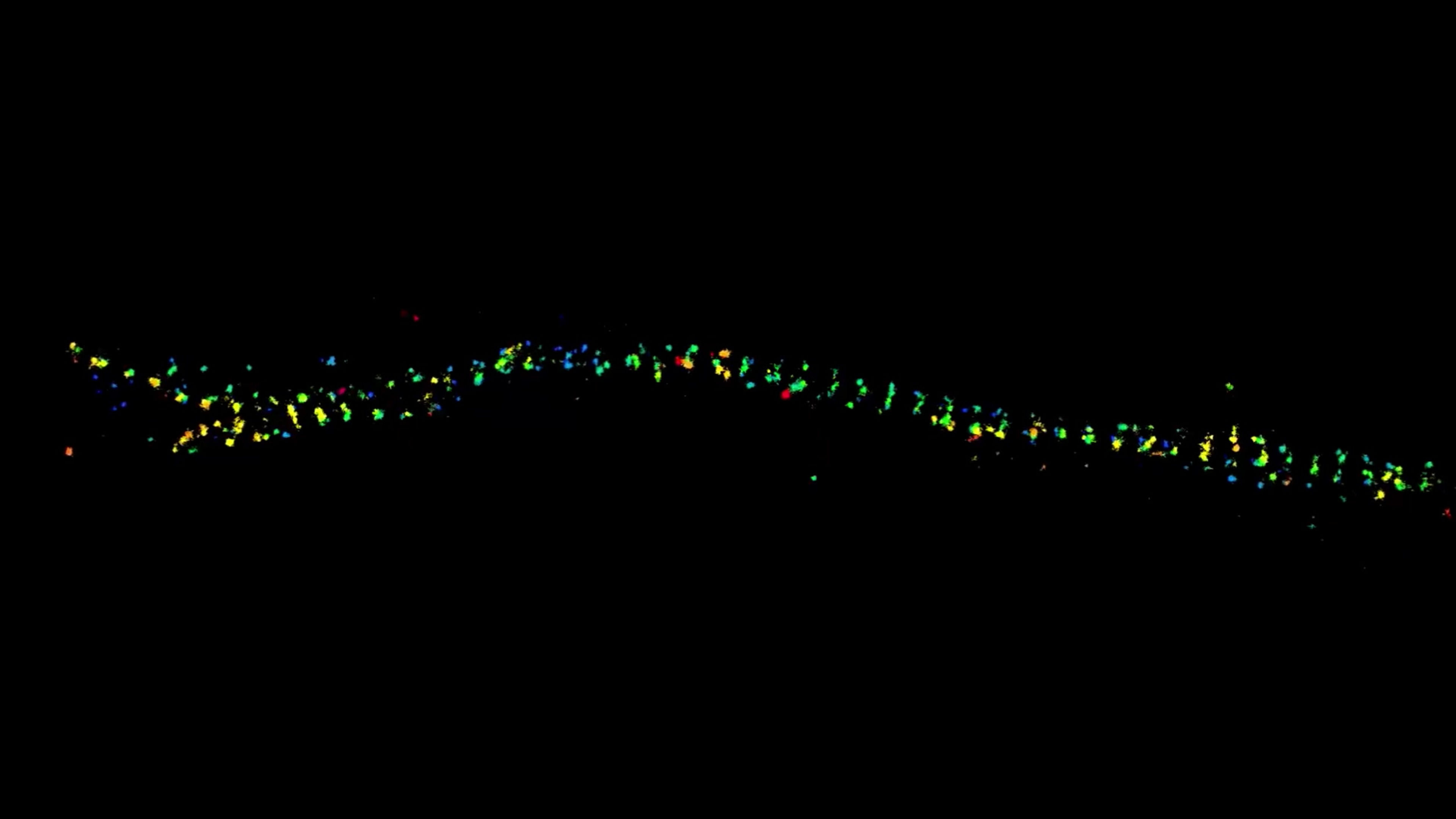
MINFLUX
Unrivaled Resolution and Speed
MINFLUX is the only superresolution microscopy in the industry that can achieve a resolution of up to 1-3 nanometers (3D).
This unrivaled resolution capability combined with unprecedented speeds reveals sample details never seen before. The MINFLUX is the world’s most powerful fluorescence microscope.
MINFLUX
The Best Tool for 3D Nano-resolution
100x
Sharper
than a confocal microscope
100x Faster Tracking
than a camera
Maximize resolution
with minimal emission
Although impactful, previous superresolution methods have failed to achieve resolutions on the length scales of the fluorescent molecules. Harnessing an entirely new and revolutionary localization principle, MINFLUX has finally accomplished this feat. Expect a resolution leap of 10-fold compared to other superresolution methods and 100-fold compared to confocal fluorescence imaging.
MINFLUX is the most precise and photon-efficient way of localizing fluorescent molecules. With its new MINFLUX system, abberior has produced the first commercial fluorescence microscope to achieve localization precisions of 1-3 nm (3D) in biological samples on large fields of view (10 x 15 μm).
MINFLUX imaging means getting the maximal localization information out of your sample.
MINFLUX tracks molecular movements at frequencies up to 10 kHz, resolving molecular motion every 100 μs. That’s 100 times faster than conventional camera-based methods. Of course, tracking works in all three dimensions, i.e., along x, y, and z. Due to the low number of photons required for each localization, single molecules can be monitored with unprecedented spatio-temporal resolution (e.g., 28.000 localizations each at 20 nm resolution).
MINFLUX is the fastest way to localize fluorescent molecules. With its revolutionary MINFLUX microscope, abberior raises the bar for molecular tracking with world-record temporal resolution, opening new doors for life scientists across all disciplines.
Choose between MINFLUX molecular imaging and tracking at the push of a button!
MINFLUX defines an entirely new class of superresolution methods that uses the best STED microscopy and the single molecule localization family. This fundamentally reduces the number of emitted photons required for ultimate localization precision. The central intensity-zero of the excitation beam searches for the emitting molecule by performing a clever sequence of sub-nm-sized probing steps. The closer the intensity-zero is to the molecule, the lower the fluorescence. By optimizing for low emission rates, the MINFLUX microscope zooms in on the molecule, concomitantly increasing the precision with which the molecular position is revealed.
MINimizing fluorescence FLUXes by matching the dark center of the excitation beam with the molecule‘s position localizes molecules reliably and with 1-3 nanometer precision in 3D!
This is MINFLUX. The best image is achieved by relying on emission minimization rather than maximization. In summary, the advantages of MINFLUX are:
-
Inherently fast imaging.
-
The ability to perfectly detect weakly emitting molecules.
-
Minimizes photobleaching.
-
Less drift dependent.

MINFLUX
Maximize resolution with minimal emission


MINFLUX
Convenient, stable, as always
Standard body
Work as usual
Almost no drift
Solid as a rock
MINFLUX
A factor of hundred
MINFLUX system is built around a standard microscope body that provides a variety of options ranging from widefield fluorescence, DIC, phase contrast over confocal, and STED, all the way up to MINFLUX. To maximize extendability, we built our MINFLUX system with reliable and time-tested elements assembled on a robust optical breadboard. Moreover, in line with our design philosophy for top-of-the-line instruments, our MINFLUX systems are future-proof: they are designed to allow adaptations with the latest technologies available: performance in perpetuity.
When performing experiments with nanometer resolution, minuscule sample drifts and movements can compromise performance. That’s why our MINFLUX comes with active sub-nanometer stabilization technology.
When MINFLUX imaging is performed, a fully automated stabilization system based on laser-illuminated fiducial markers keeps the sample perfectly still, with residual fluctuations < 1 nm in 3D.
-
More than 100 kHz line frequency: scan 100 times faster than any other method.
-
1 – 3 nm localization precision in 3D: resolve 100 times better than confocal microscopy.
-
100 µs time per localization: track fluorophores 100 times faster than with a camera.
Imaging example
